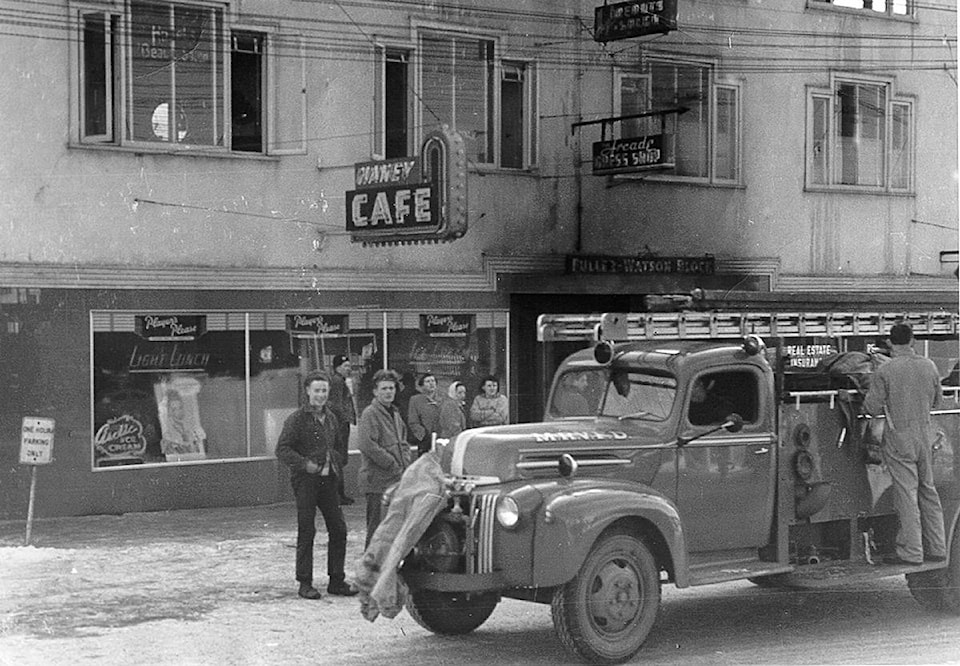Before the time of organized fire brigades, the alarm of a fire was announced by the ringing of the church bell, or a watchman calling out the warning through the nearby area to send for help.
In those early days, it was common for residents to keep two fire buckets available in case of fire. In fact, most municipalities passed a bylaw to enforce the practice. Some towns even commanded that a ladder for roof and chimney access also be kept handy.
Responding to the alarm, neighbours would bring their own buckets to draw water from the nearest cistern or well to form a “bucket brigade.”
From the mid-1800s to the present, massive changes have taken place in the fire service in Canada. Typically, after a bylaw was passed by the local council to form a fire brigade, a selection process appointed senior officers, who in turn recruited interested, community minded citizens wanting to join the brigade.
On June 13, 1886, fire destroyed most of Vancouver, which had only been incorporated three months earlier. A clearing fire blazed out of control and in one hour only two of the 400 original buildings were left standing.
Due to the fire, it was decided that replacement construction should be of brick stone or cast iron.
The Vancouver Daily Province reported on Oct. 13, 1916, a major fire in the Port Hammond town site. In a wood-framed town lit almost exclusively with fuel oil and wood stoves, the risks were high.
Unfortunate also was the lack of a pump car, capable of drawing water from a water source to a pressurized hose, within town.
After the fire’s discovery, the call was put to the organized fire department in Vancouver for the use of theirs. When it was not available, the next available pumper from the now-defunct municipality of Point Grey was called out to Maple Ridge.
Arriving from Vancouver’s west side over gravel roads and the newly opened Pitt River Bridge, the equipment was too late to be put to use.
Despite the torching of Port Hammond, and later fires in Haney (1926), Hammond (1926), and Haney (1932), it was still years before the municipality organized its first fire department on a volunteer basis.
The Maple Ridge Fire Department was first established in 1945. It took a disastrous house fire to spark the action of creating the Haney Volunteer Fire Department, as it was first named.
Many locals remember the sound of the air raid siren coming straight from the first fire hall, built on 8th Avenue (now 224th Street).
In 1958, the volunteer fire department reported saving over $800, 000 in buildings and property.
Fire Hall No. 1 was later moved to Dewdney and 227th Street, continuing to service the downtown core.
Over the years, the fire halls have grown in number and size. A mix of paid and volunteer fire fighters work towards preventing fires, and provide public education to reduce risks.
Fire Hall No. 2 was built along 112th Ave, near Whonnock Lake, to serve the east sector.
Fire Hall No. 3 was built on 203rd Street for the west sector of Maple Ridge.
As the area became more populated, six new firefighters and two new firetrucks were allocated to the latter.
In 2010, after two years of expansion and renovations, Fire Hall No. 1 was reopened on Dewdney Trunk Road. Renovations created much needed space for the fire crews, offices and the Emergency Operations Centre, along with a room for training.
In December at the Maple Ridge library, the Maple Ridge Museum will have displays on the history of fire, flooding and freezing over the past 100 years.
Allison White is curator at the Maple Ridge Museum.
